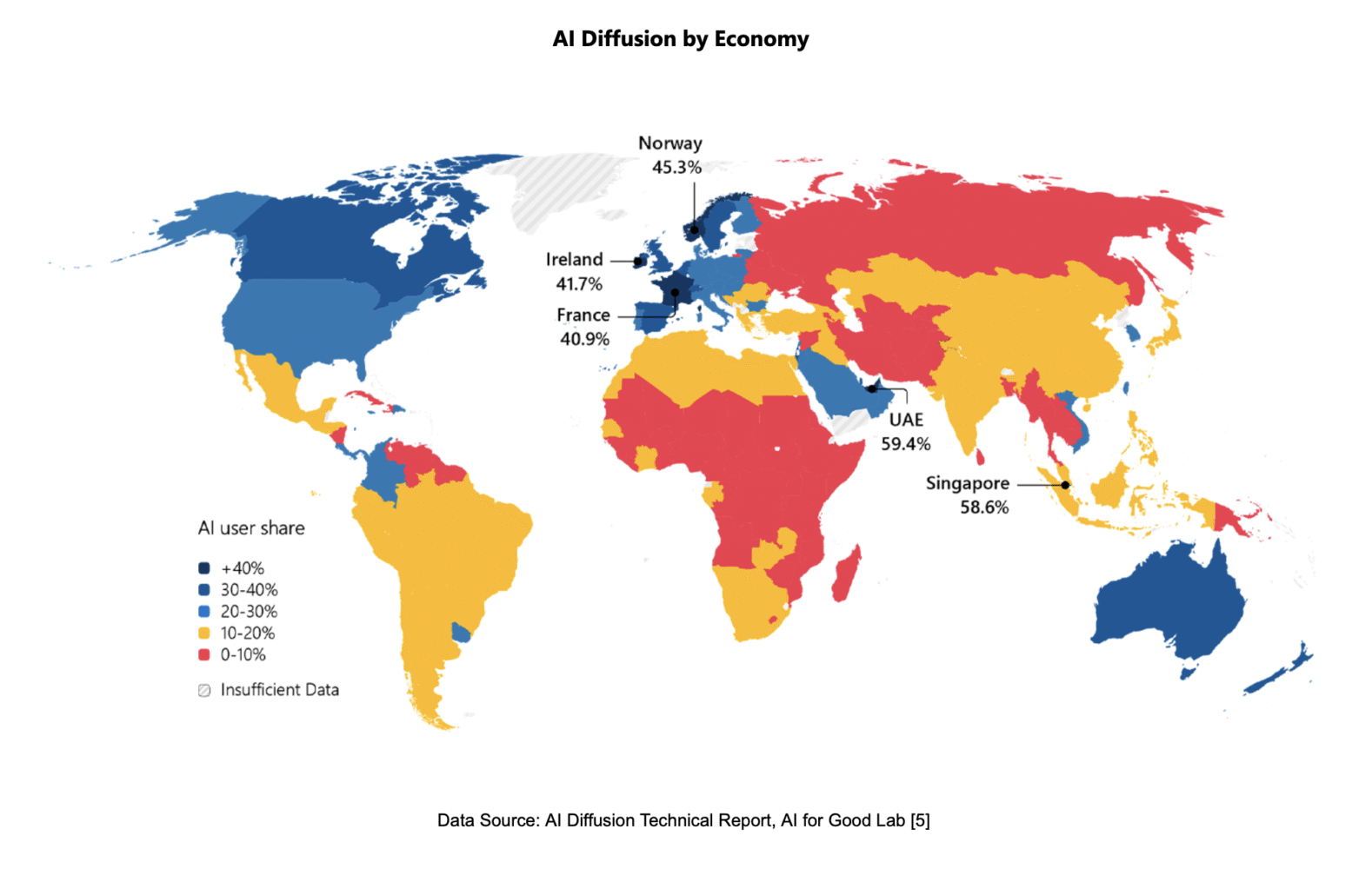The UAE has taken the global lead in artificial intelligence adoption, according to Microsoft’s October 2025 AI Diffusion Report, with nearly 60% of its working-age population using AI tools in some capacity. That figure—59.45% to be exact—puts the country well ahead of the global average of 15% and far beyond tech-heavy regions like North America (27%) and Europe (22%).
Microsoft’s study uses a metric it calls “AI User Share,” which estimates how many people in each economy actively use AI tools. The calculation blends anonymized Microsoft telemetry, device penetration data, and mobile scaling factors to track usage across 147 economies. In simpler terms, it’s an attempt to measure real-world AI use, not just interest or awareness. The UAE tops that list, followed closely by Singapore, Norway, Ireland, and France. The UK ranks eighth at 36.4%, while the US sits at 23rd with 26.3%.
Microsoft acknowledges the limits of its own data: the metric relies heavily on Windows-based signals and opt-in telemetry, meaning it may undercount mobile-first users or countries where Microsoft’s footprint is smaller. Still, the broad trends are hard to ignore. Wealthier economies tend to show higher adoption, and large jumps often follow major AI product launches. For example, China’s user share doubled to roughly 20% after the release of DeepSeek in early 2025, highlighting how quickly real usage can spike when new models reach the market.

For the UAE, the report’s findings reflect what’s already visible on the ground. From government offices to startups, AI has quietly become part of everyday workflows—embedded in productivity software, design tools, and coding assistants. The figure doesn’t suggest that every professional is an expert, but it does show that most are engaging with AI in some form. This momentum aligns with national investments in computing infrastructure and AI education, including the 1GW Stargate UAE cluster project and regional training initiatives like “AI for All.”
For business leaders, the takeaway is less about bragging rights and more about readiness. High adoption rates mean that competitors are likely already experimenting with automation and data-driven workflows. Companies in the UAE should focus on building internal AI literacy, strengthening data governance, and identifying a few clear use cases where AI can deliver measurable outcomes. That may mean upskilling staff on prompt-writing, running pilots with local models to protect IP, or streamlining repetitive workflows before scaling them further.
While Microsoft’s methodology has its blind spots, the ranking captures an unmistakable shift: AI use in the UAE has become both mainstream and measurable. The next challenge isn’t adoption—it’s depth, as teams move from using AI occasionally to relying on it as a core part of how work gets done.







